After exploring the USS Becuna, Jandy and I now went out and boarded the USS Olympia (C-6/CA-15/CL-15/IX-40), a protected cruiser famous, during the Spanish–American War, as the flagship of Commodore George Dewey at the May 1, 1898 Battle of Manila Bay. There was a semi-permanent exhibit opened last June 16, 2017, featuring the Olympia, entitled “World War I USS Olympia.” to commemorate the World War I centennial. The World War I USS Olympia exhibit highlights the Ship’s humanitarian and peace-keeping role in World War I Europe. The exhibit also explores the everyday life of sailors aboard the ship, as well as, the Olympia’s final mission of transporting the remains of the Unknown Soldier from France to Arlington National Cemetery in Washington, DC.
The design of the interior of the USS Olympia was not that far off from the old sailing ships of the line, with an enormous amount of deeply polished wood at the sumptuous officer’s quarters (called the “Officers’ Country). The beautifully paneled staterooms of the officers contrasts with the tiny hammocks of the enlisted men.
Before the USS Olympia retired in 1922, most of its original guns were removed in refits but, amazingly, one of the original guns survives today, a 6-pounder forward on the port side.The captain’s cabin also mounted a gun.
Voice pipes lead from the bridge to various stations, including the emergency steering – a triple-wheel made of wood, out on deck towards the stern.
Ammunition hoists, sitting close by coal chutes and ash hoists, look like china cabinets. It’s an amazing step back into history. All throughout, great signs describe life on the ship and its history. We weren’t able to see the engine room (to see the big old steam engines, the giant crankshaft and connecting rods and the cramped boiler room) as it’s only included in the highly recommended “Behind the Scenes” tour which the we were too late for.
Here are some interesting trivia regarding this ship:
- She saw service in the United States Navy from her commissioning in 1895 until 1922.
- She was twice decommissioned and recommissioned.
- For several months after her commissioning, she was the largest ship ever built on the western coast of the US, until surpassed by the battleship Oregon.
- Admiral George Dewey and Olympia became famous as the first victors of the Spanish-American War.
- She is the sole floating survivor of the US Navy’s Spanish–American War fleet.
- Olympiais the oldest steel US warship still afloat in the world.
- She is the sole survivor of the U.S naval shipbuilding program from the 1880s and 1890s and the only surviving pre-dreadnaught protected cruiser in the world.
- It is one of only four warships representative of the time period that exist worldwide.
Here is the timeline of the ship’s history:
- In 1889, the newly formed Board on the Design of Ships began the design process for Cruiser Number 6
- On April 8, 1890, the navy solicited bids but found only one bidder, the Union Iron Worksin San Francisco, California.
- On July 10, 1890, the contract was signed
- On June 17, 1891, the ship’s keel was laid
- On November 5, 1892, the ship was launched.
- On November 3, 1893, Union Iron Works conducted the first round of trials.
- On December 1893, she was dispatched from San Francisco to Santa Barbara
- On December 15, 1893, Olympia sailed into the Santa Barbara Channel and began an official four-hour speed trial time.
- On February 5, 1895, the new cruiser was ultimately commissioned.
- Upon commissioning, Olympia departed the Union Iron Works yard in San Francisco and steamed inland to the U.S. Navy’s Mare Island Naval Shipyard at Vallejo, where outfitting was completed and Captain John J. Read was placed in command.
- In April 1895, the ship steamed south, to Santa Barbara, to participate in a festival. That same month, the ship’s crew also conducted landing drills in Sausalito and Santa Cruz.
- On April 20, 1895, the ship conducted its first gunnery practice, during which one of the ship’s gunners, Coxswain John Johnson, was killed in an accident with one of the 5-inch guns
- On July 27, 1895, the ship starts its last shakedown cruise
- On August 25, 1895, the ship departed the United States for Chinese waters.
- A week later, the ship arrived in Hawaii, where she remained until October 23 due to an outbreak of cholera. The ship then sailed for Yokohama, Japan
- On November 9, 1895, the ship arrives in Yokohama.
- On November 15, 1895, the Baltimore arrives in Yokohama, from Shanghai, China, to transfer command of the Asiatic Squadron to Olympia. She was designated as the flagship.
- On December 18, 1895, Rear Admiral F.V. McNair arrives to take command of the squadron.
- The following two years, the ship joined training exercises with the other members of the Asiatic Squadron as well as goodwill visits to various ports in Asia, notably Hongkong and Kobe and Nagasaki in Japan.
- On January 3, 1898, Commodore George Dewey raised his flag on Olympia and assumed command of the squadron.
- On April 25, 1898, the Spanish-American War began and Dewey moved his ships to Mirs Bay, China.
- On April 27, 1898, the Navy Department ordered the Squadron to Manila in the Philippines, where a significant Spanish naval force protected the harbor. Dewey was ordered to sink or capture the Spanish warships, opening the way for a subsequent conquest by US forces.
- On the morning of May 1, 1898, Commodore Dewey, with his flag aboard Olympia, steamed his ships into Manila Bay to confront the Spanish flotilla commanded by Rear Admiral Patricio Montojo y Pasarón. At approximately 05:40, Dewey instructed Olympia‘s captain, “You may fire when you are ready, Gridley.” Newly assigned Capt. Charles Vernon Gridley ordered the forward 8-inch gun turret, commanded by Gunners Mate Adolph Nilsson, to open fire, which opened the battle and prompted the other American warships to begin firing. By early afternoon, Dewey had completed the destruction of Montojo’s squadron and the shore batteries, while his own ships were largely undamaged. Dewey anchored his ships off Manila and accepted the surrender of the city. Olympia remained in the area and supported the American expeditionary force by shelling Spanish forces on land.
- On May 20, 1898, the ship returned to the Chinese coast, remaining there until the following month, when she departed for the US, via the Suez Canal and the Mediterranean Sea.
- On October 10, 1898, the ship arrived in Boston. Following Olympia‘s return to the US, her officers and crew were feted and she was herself repainted and adorned with a gilded bow ornament.
- On November 9, 1898, Olympia was decommissioned and placed in reserve.
- On January 2, 1902, the Olympia was recommissioned into the fleet and assigned to the North Atlantic Squadron. Her first duty was to serve as the flagship of the Caribbean Division.
- Over the following four years, the ship patrolled the Atlantic and Mediterranean, her voyages including a visit to Turkey.
- In March through April 1903, she and four other U.S. Navy warships were involved in an intervention in Honduras.
- Starting on April 2, 1906, she became a training ship for midshipmen from the United States Naval Academy. In this role, she conducted three summer training cruises – May 15 – August 26, 1907, June 1 – September 1, 1908 and May 14 – August 28, 1909. Between the cruises, the ship was placed in reserve, first in Norfolk, Virginia and later at Annapolis, Maryland.
- On March 6, 1912, Olympia arrived in Charleston, South Carolina, serving as a barracks ship until 1916.
- In late 1916, when it became increasingly clear that the US would eventually enter World War I, the ship was recommissioned into the fleet.
- After the U.S. entered the First World War by declaring war on Germany in April 1917, Olympia was mobilized as the flagship of the U.S. Patrol Force. She was tasked with patrolling the eastern seaboard of the US for German warships. She also escorted transport ships in the North Atlantic.
- On June 15, 1917, she ran aground in Long Island Sound, and put in for repairs at the Brooklyn Navy Yard, which, along with the replacement of her 8-inch and 5″/40-caliber guns with 5″/51-caliber guns, took eight months.
- On April 28, 1918, Olympiadeparted Charleston, carrying an expeditionary force bound for Russia which had previously been a member of the Allied Powers but was in the midst of civil war and had signed a separate peace with Germany.
- On June 9, 1918, Olympia arrived in Murmansk, Russia, and deployed the peace-keeping force. She subsequently assisted in the occupation of Archangel.
- After World War I, participated in the 1919 Allied intervention in the Russian Civil War and conducted cruises in the Mediterranean and Adriatic Seas to promote peace in the unstable Balkan countries.
- After the end of the war, Olympia sailed to the Mediterranean via Portsmouth, England.
- On December 1918, the ship became the flagship for American naval forces stationed in the eastern Mediterranean Sea. While on this assignment, she continued in her old role of showing the flag and conducting goodwill visits in various Mediterranean ports. This included a period of policing duty in the Adriatic Sea from January 21 to October 25, 1919 (the Dalmatian coast was in a state of turmoil following the collapse of the Austro-Hungarian Empire at the end of the war).
- On August 18, 1918, she steamed to the Black Sea to aid the return of refugees from the Balkans who had fled during the war.
- By September 19, 1918, she was back in the Adriatic and four days later had to deploy a landing party to prevent an incident between Italian and Yugoslav forces.
- On November 24, 1919, Olympia briefly returned to Charleston.
- In 1920, she was reclassified as CA-15.
- On February 14, 1920, she departed New York for another tour of duty in the Adriatic,
- On May 25, 1921, the ship returned to Charleston.
- On June 1921, she was made the flagship of the Atlantic Fleet’s training unit.
- In July, 1921, she then participated in joint Army-Navy experiments, during which the ex-German warships Ostfriesland and Frankfurt were sunk off the Virginia Capes. She was again reclassified as CL-15 that year.
- On October 3, 1921, Olympia departed Philadelphia for Le Havre, France, to bring the remains of the Unknown Soldier home for interment in Arlington National Cemetery in Washington, D.C..
- On October 25, 1921, the cruiser departed France, escorted by a group of French destroyers for part of the voyage.
- On November 9, 1921, at the mouth of the Potomac River, the battleship North Dakotaand the destroyer Bernadou joined Olympia as she sailed to the Washington Navy Yard. After transferring the remains ashore, the cruiser fired her guns in salute.
- In the summer of 1922, she conducted a last training cruise for midshipmen.
- On December 9, 1922, she was decommissioned for the last time in Philadelphia and placed in reserve.
- On June 30, 1931, the ship was reclassified IX-40 to be preserved as a relic.
- On September 11, 1957, she was released to the Cruiser Olympia Association, restored to her 1898 configuration and became a museum ship under their auspices. The main 8-inch guns and turrets, scrapped before World War I, were replaced with sheet metal fabrications.
- In 1966, Olympia was designated a National Historic Landmark.
- In January 1996, when faced with mounting debt and tremendous deferred maintenance, the Cruiser Olympia Society merged with the Independence Seaport Museum in Philadelphia.
Today, Olympia is a museum ship at the Independence Seaport Museum in Penn’s Landing in Philadelphia. Naval Reserve Officer Training Corps Midshipmen from Villanova University and the University of Pennsylvania regularly work on Olympia, functioning as maintenance crew. Olympia’s stern plate and bow ornaments are on display at Dahlgren Hall at the United States Naval Academy.
Here are some specifications of this ship:
- Overall length: 104.88 m. (344 ft. 1 in.)
- Beam: 16 m. (53 ft.)
- Draft: 6.55 m. (21 ft. 6 in.)
- Design displacement: 5,865 long tons (5,959 t)
- Full combat load: 6,558 long tons (6,663 t)
- Propulsion: 2 x vertical triple expansion engines, 6 × boilers (4 × double-ended, 2 × single-ended), 2 × screws. Her engines were rated at 13,500 ihp (10,100 kW)
- Armament (as built): 4 × 8 in (203 mm)/35 cal Mark 4 guns (2×2), 10 × 5 in (127 mm)/40 cal Mark 2 guns (10×1), 14 × 6-pounder 57 mm (2.24 in) Driggs-Schroeder RF guns, 6 × 1-pounder 37 mm (1.46 in) guns, 4 × Gatling guns, 6 × 17.7 in (450 mm) above-surface torpedo tubes, firing Whitehead Mark 1 torpedoes.
- Armament (1917): 10 × 5 in (127 mm)/51 cal Mark 8 guns (10×1)
- Deck Armor: 12.1 cm. (4.75 in.) on slopes, 5.1 cm. (2 in.) flat, 7.6 cm. (3 in.) ends.
- Barbettes Armor: 11 cm. (4.5 in.)
- Turrets Armor: 8.9 cm. (3.5 in.); 10 cm. (4 in.) (shields to 5-inch guns).
- Speed: 21.7 knots (40.2 km/h; 25.0 mph)
- Range: 6,000 nmi (11,000 km; 6,900 mi) at 10 knots (19 km/h; 12 mph)
- Capacity: 1,169 short tons (1,060 t) coal (maximum)
- Complement: 33 officers and 395 enlisted
- Coal bunker capacity: 1,085.6 tons
- Normal coal supply: 400 tons
- Endurance at 10 knots: 6,105 nautical miles
- Cost: US$1,796,000
Independence Seaport Museum: 211 S. Columbus Blvd., Philadelphia, Pennsylvania 19106, U.S.A. Tel: +1 215-413-8655. Website: www.phillyseaport.org. Open daily, 10 AM – 5 PM. Closed on Thanksgiving Day and Christmas Day but open on New Year’s Day, Martin Luther King Day (January 15) and President’s Day (February 19). Admission: US$16 (adults), US$12 (seniors, 65 & over), US$12 (children, 3–12 years old), free for college students, military (active & retired) and children 2 years old & under. Seafarin’ Saturday and Citizen Science Lab programming are included with regular admission. Group visits are available at reduced rates for a minimum of ten people. Reservations must be made in advance. Visitors can also walk aboard, tour, and watch historical reenactments conducted by the Cruiser Olympia Living History Crew.

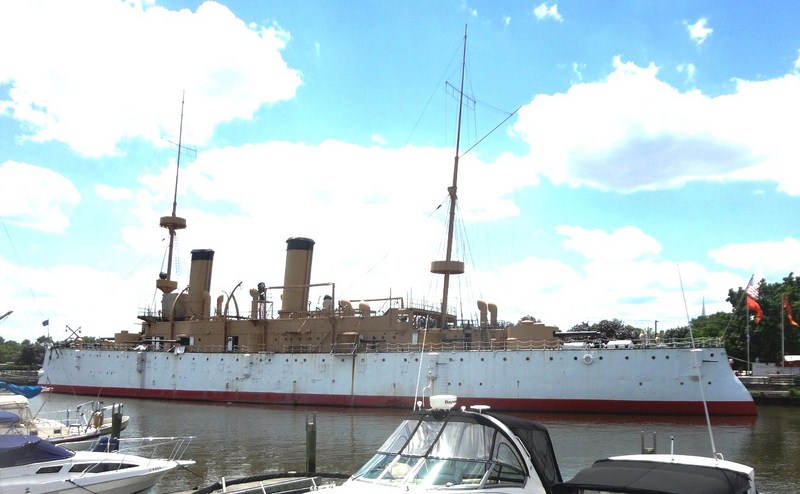
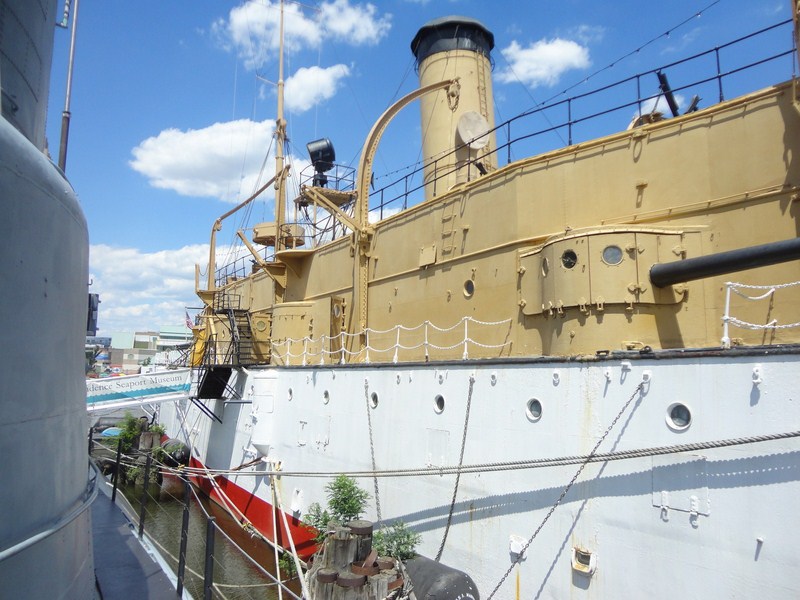
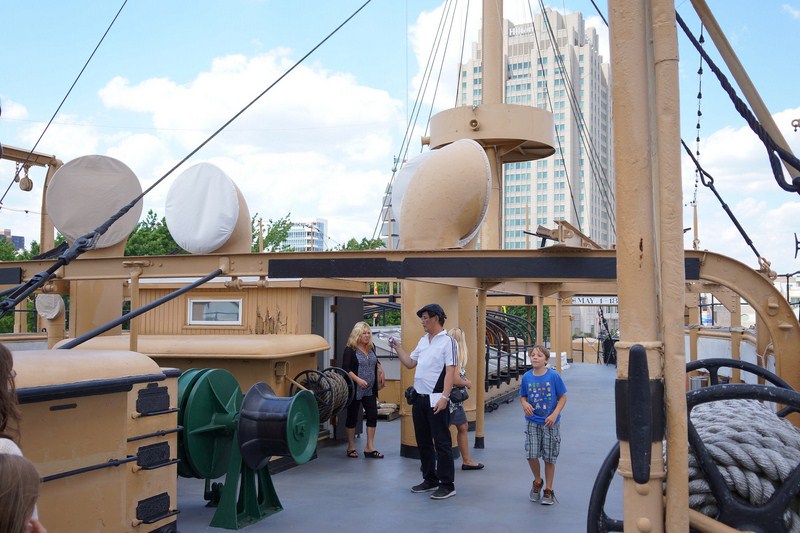

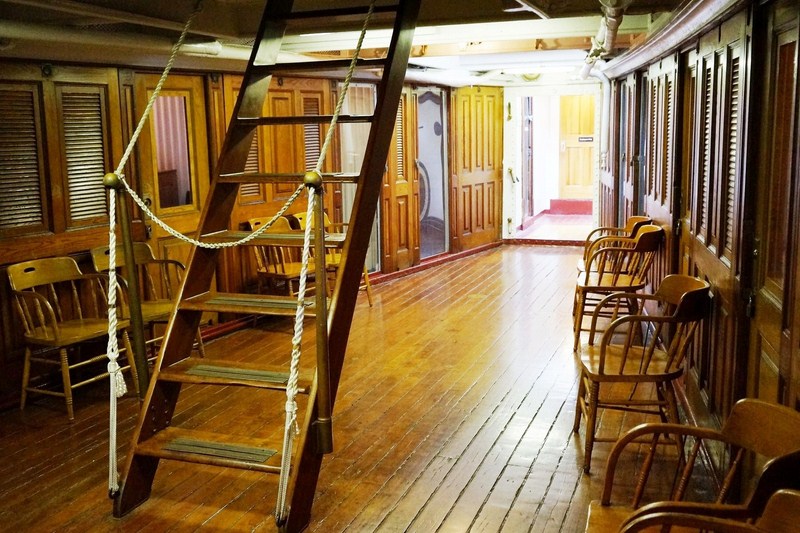
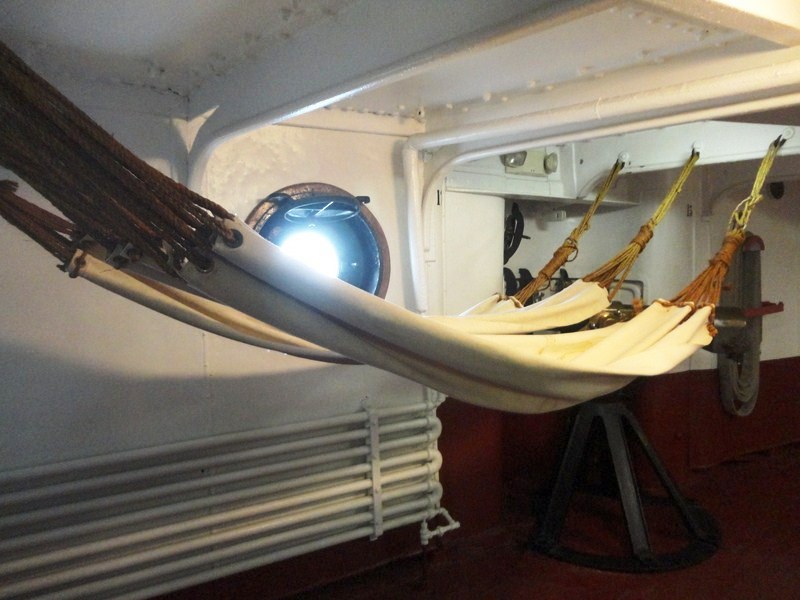
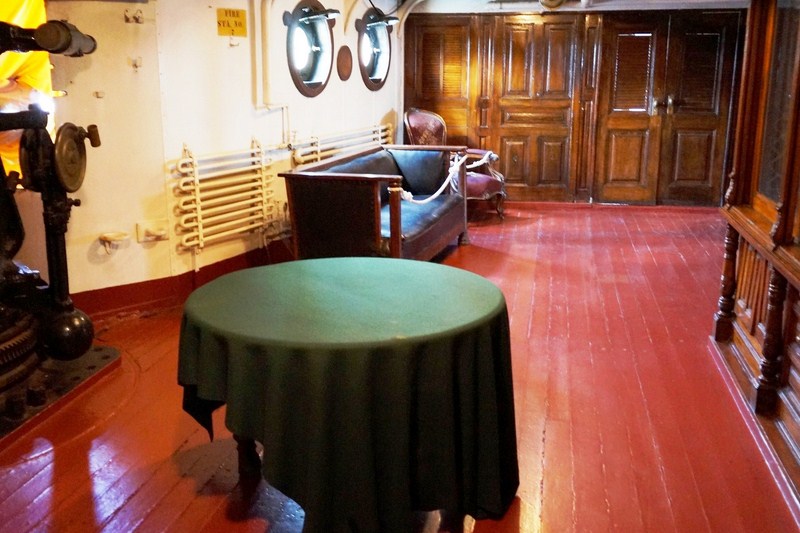
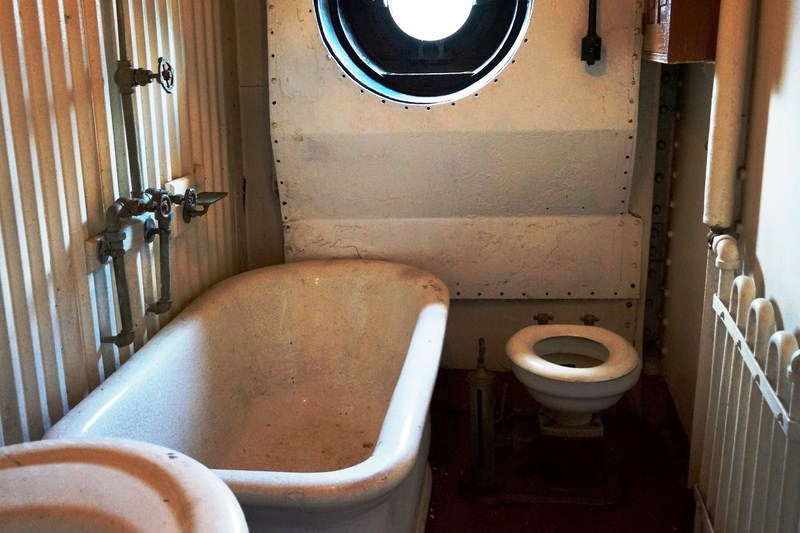
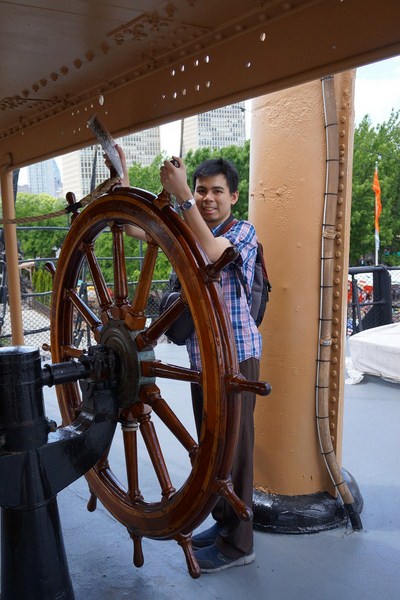
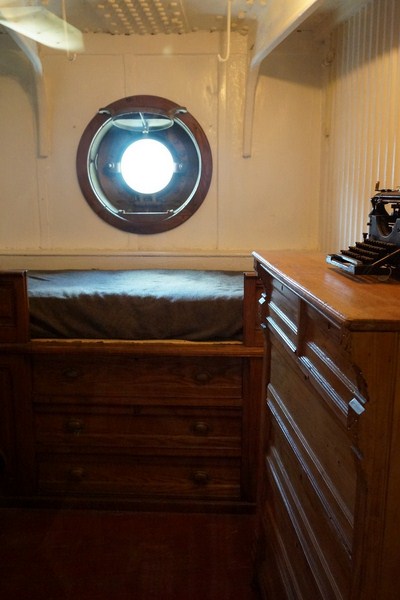
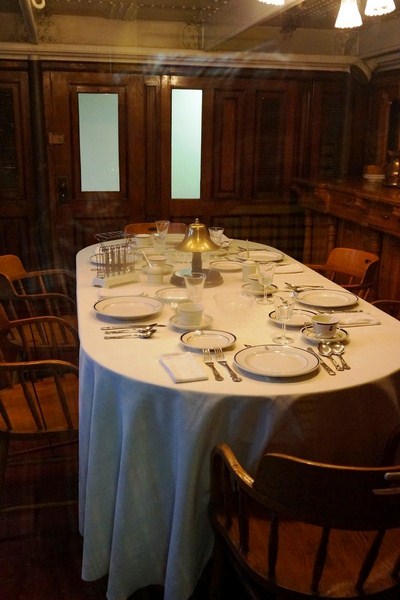
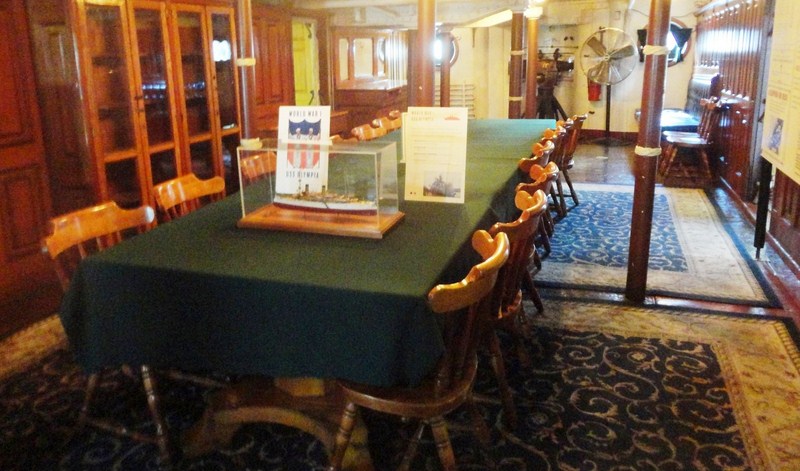

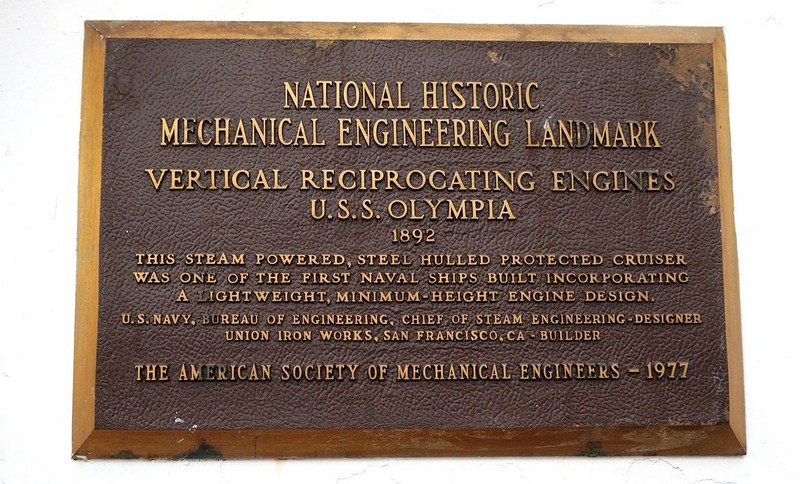
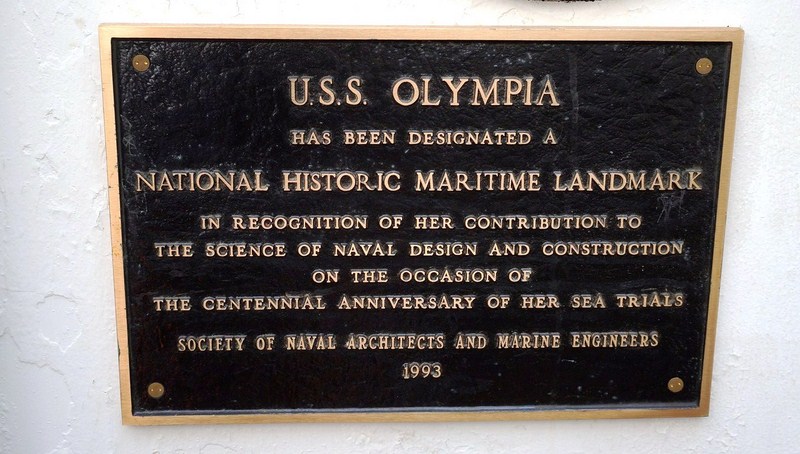
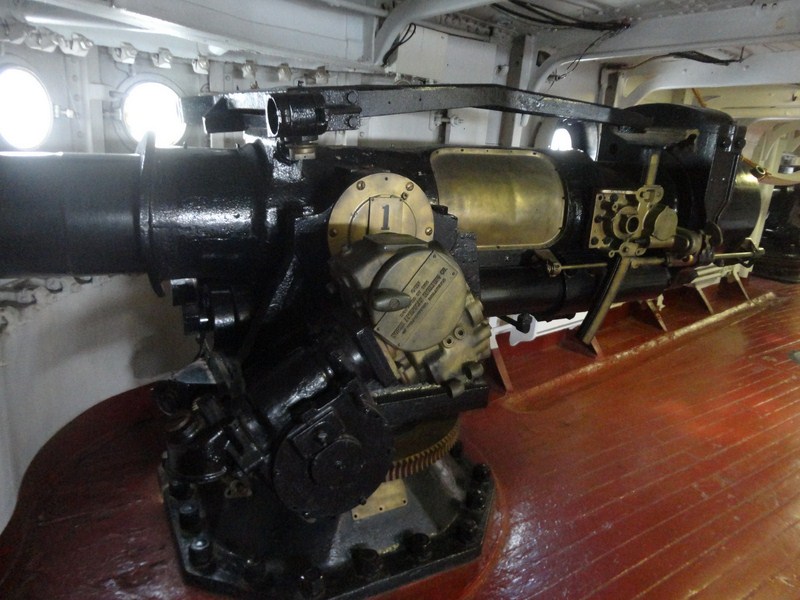

Pingback: Independence Seaport Museum – USS Becuna (Philadelphia, Pennsylvania, USA) – B.L.A.S.T. – Live Life to the Fullest ……… Don't Stay Put
Pingback: Independence Seaport Museum (Philadelphia, Pennsylvania, USA) – B.L.A.S.T. – Live Life to the Fullest ……… Don't Stay Put
Pingback: The Moshulu (Philadelphia, Pennsylvania, USA) – B.L.A.S.T. – Live Life to the Fullest ……… Don't Stay Put